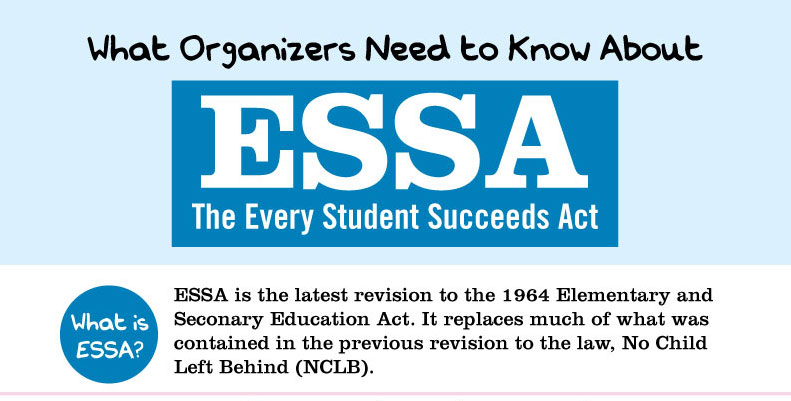Infographic
What Organizers Need to Know About ESSA
The Every Student Succeeds Act (ESSA), passed in 2015, was a marked shift away from its predecessor, the No Child Left Behind Act. Under ESSA, much of the decision-making, accountability, and oversight passed from the Federal government to the states. In this transfer of policymaking to the state level, ESSA includes some important opportunities for students, parents, educators and communities to have their voices heard both in state capitols and in their local districts.
In collaboration with our grantee Southern Echo, we’ve begun sketching out some of these opportunities in ESSA to move the cause of education justice further and to help ensure that schools and districts are held accountable to a much better-rounded and more holistic evaluation of their performance than before.
This infographic includes three key openings for organizers:
- State Plans — States are required to involve local stakeholders when drafting their plans.
- Accountability Plans — In addition to the required metrics, ESSA allows states to pick their own metrics for evaluating school performance. This allows the inclusion of factors that get to school climate, like discipline rates.
- School Improvement Plans — Schools identified as needing improvement are required to notify parents to let them know how they can get involved in improving their children’s school. If parents and the community is organized, they can ensure improvement plans lead to genuine improvement, not privatization.
Share the infographic below, download a printable version, and check out these resources to learn more about how we can use ESSA to help provide all children with a fair and equitable opportunity to learn.
- ESSA Organizing & Policy Toolkit – Education Justice Network
- NAACP Legal and Education Defense Fund
- Dignity In Schools Campaign
- ESSA Webinar – Women’s Law Center
- Mississippi Department of Education
- Protecting an Opportunity to Learn Through ESSA State Accountability Plans


